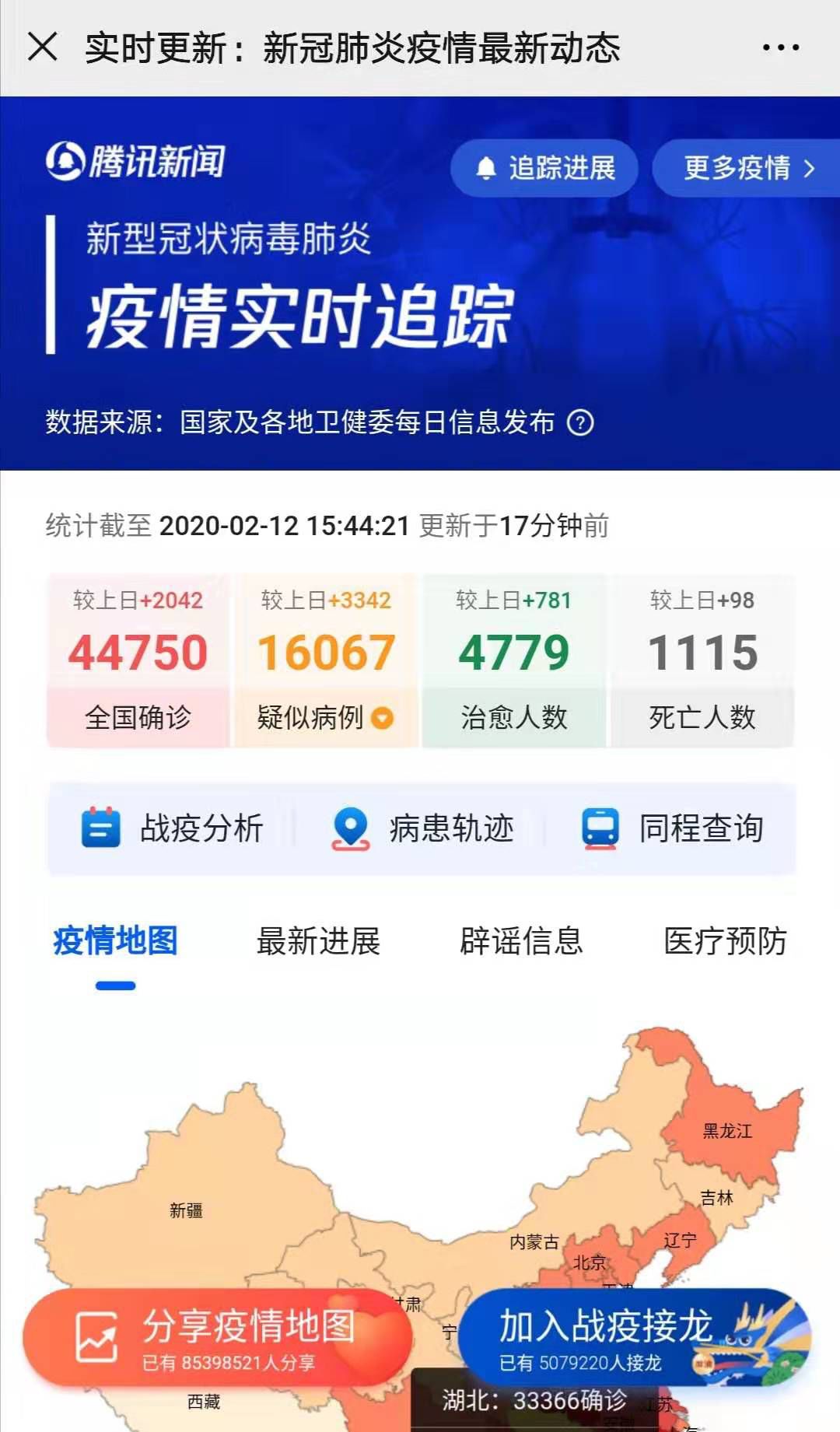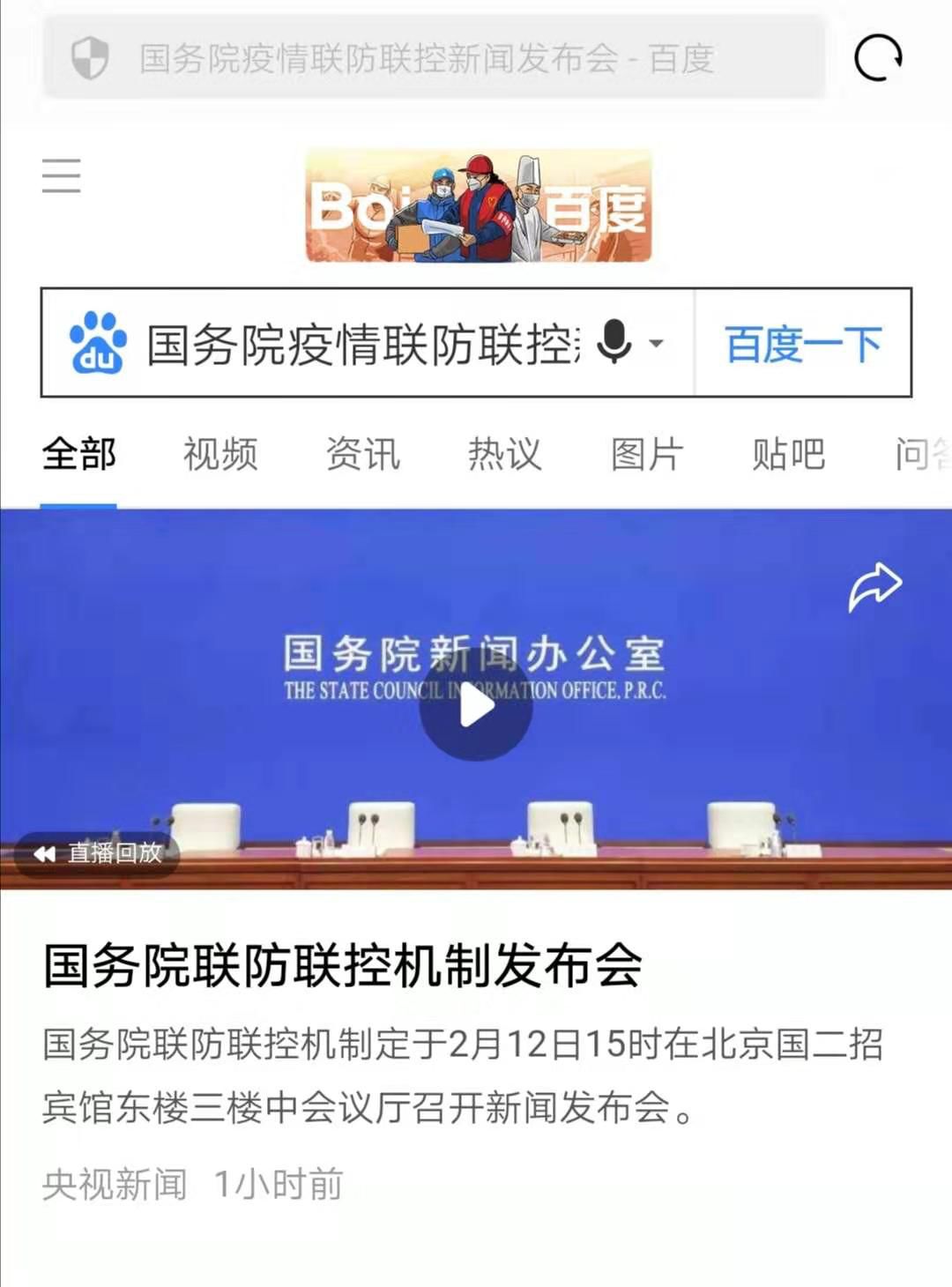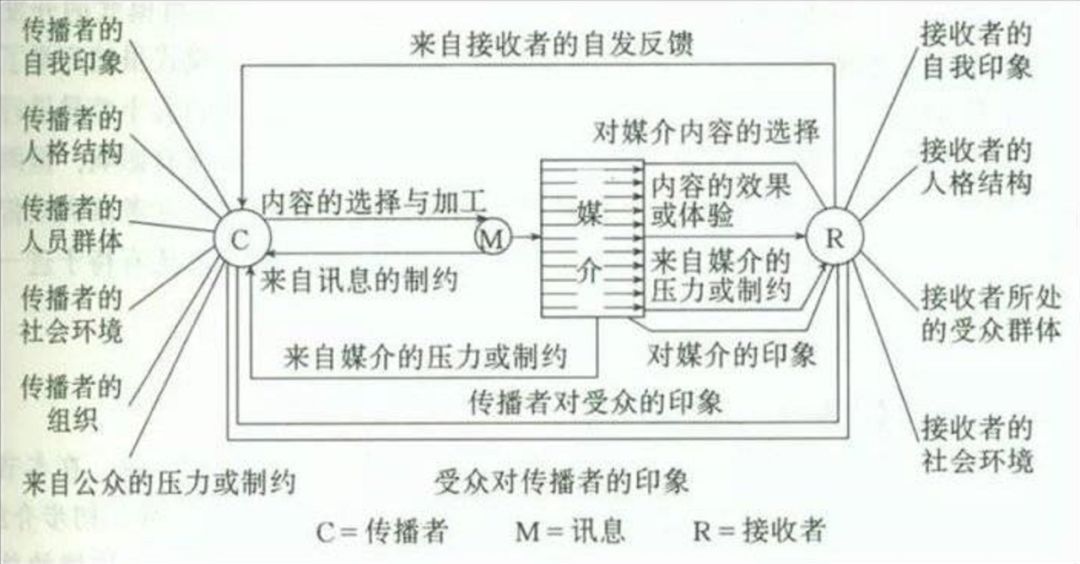val = “720,833”>

In the case of this kind of information overload, the most effective step to distinguish the authenticity of the information is to screen the source of the information and try to obtain the required information only from the relatively reliable formal channels.
For example, regarding this epidemic situation, I basically only focus on information from three channels:
① Real-time tracking page of the new crown epidemic on WeChat

② Subscription number of Shenzhen Health Commission

③ Press conference of the joint prevention and control mechanism of the State Council

I have doubts about the information outside these three channels, and will not accept it for the time being, so that I can obtain the necessary epidemic information at a lower cost, while avoiding being bombarded by a lot of false information.
Of course, this approach also places higher demands on such relatively reliable channels.
If the information is not released in a timely, inadequate and inaccurate manner, once the credibility is damaged, it will be reduced from a relatively reliable channel to an uncertain channel. At this time, the public will believe that the original trust may not be so high. Channel.
02. Step 2: Verify the information content
WarpAfter filtering the information source in step 1, the fake information that can reach you is greatly filtered.
But this step is not enough.
In the era of pure experience in which chickens and dogs meet in ancient times and old ones meet, an individual can perceive the world with his own first-hand experience, completely shielding false information.
But as the world we live in becomes more and more complex and is limited by individual cognitive abilities, we have to use various channels (such as news, various big Vs, grassroots influencers, and friends and neighbors) Information to form awareness of this world.

▲ Picture, complex social communication process
Although we have tried to obtain information from relatively reliable channels, it is still unavoidable to obtain information from some uncertain channels. At the same time, information from relatively reliable channels sometimes requires our re-verification.
How do you verify the information obtained?
You can ask yourself through the list of questions below.
1. Where can I get this information after using it? Does it work for me?
This is the first question to ask.
If a piece of information is useless to us, it is redundant and invalid regardless of its authenticity, so we don’t need to waste time to distinguish the authenticity.
Take an example:
Someone sent a message in the WeChat group saying that the start time of elementary and middle schools was delayed to April.
If you do n’t have a child, do n’t waste time verifying the authenticity of this information.
But if you happen to have school children in your home, this information will affect your work and family planning and it will be useful to you.
2. Who said this message? Is what he is talking about consistent with his identifiable area of expertise?
After you have determined that the information is useful, you need to understand the identity of the person who spoke it, and analyze whether what he said is consistent with his verifiable identity expertise.
In the WeChat group, some people said that the start time of elementary and middle schools was delayed to April as an example.
If the person who posted this information is a friend who works for your company, then you can first doubt this information and not accept it, because what he said is not in line with his professionalism.
But if the person who posted this information is from the Education Bureau or a school teacher, then you can temporarilyAccept and continue to verify.
3. What is the motivation and purpose of this message? Does it conflict with my needs?
After you make sure that the person who posted the information is credible, you need to analyze his motivation and purpose for distributing the information.
The purpose of this step is twofold:
① Prevent anyone from using their own halo to spread false information.
② Prevent yourself from being seduced or deceived.
We continue to take the example of a teacher in the WeChat group saying that the start time of elementary and middle schools is delayed to April.
If he said that the purpose of this message is to inform parents to continue to arrange the child at home, then this information is acceptable.
But if he said that the purpose of this information is to promote a certain indoor fitness equipment for children, then you have to go to other channels to verify the authenticity of this information.
Through the question list above, you can basically verify whether you need to absorb this information.
03. Step 3: Leave a cool-off period
After the first step of filtering the information source and the second step of verifying the information content, you have basically made a judgment on whether the information is credible.
But there are still two shortcomings in individual cognition that will still cause your judgment to be wrong.
① Limitation of individual professional ability
A person cannot be an expert in all fields, and even if he is an expert in all fields, he cannot have the energy to verify all the information one by one.
So, in the second step question list, we used “trust trust” (trusting authority, and then trusting the information they released) to make judgments about the authenticity of information outside of our professional ability.
For example, I believe that Academician Zhong Nanshan said that the new crown virus can be spread by contact. Wash hands and wash your hands frequently.
② Individuals will preset the premise
Any individual will obtain availability bias due to preset premises when obtaining information.
For example, an American who wears colored glasses to China will see information about how the Chinese spread the virus and how China ’s resistance to the epidemic is not in place. Even if there were positive reports in front of him, he could not occupy his attention.
The information push mechanism under the current machine recommendation algorithm has further exacerbated our availability bias.
During the Spring Festival, I searched for “how to identify fake masks”, and when I browsed the information, I found that the information related to fake masks increased greatly.
These two shortcomings are difficult for us to make up for through self-improvement, so we can only alleviate them by “leaving a cooling off period”.
Leave coldThe static period means that after making personal judgment on the authenticity of the information in the second step, no action is taken first, but after the comments and feedback from all parties are made, the comparison and decision are made.
With this method, we can help us overcome the limitations of inadequate professional capabilities and deviations in availability.
For example, during this epidemic, a joint study by the Shanghai Institute of Materia Medica and the Wuhan Institute of Virology of the Chinese Academy of Sciences initially found that Shuanghuanglian Oral Liquid, a Chinese patent medicine, could inhibit the new coronavirus. Therefore, many people lined up all night, and the Shuanghuang Company was snatched away overnight.
The judgement of this information is completely beyond the professional level of ordinary people, and it can also pass the self-check of the second step question list:
Question 1: Where can I use this information after I have obtained it? Does it work for me?
Answer 1: It is useful for preventing new crown virus.
Question 2: Who said this message? Is what he is talking about consistent with his verifiable area of expertise?
Answer 2: Shanghai Institute of Materia Medica, Chinese Academy of Sciences and Wuhan Institute of Virology, agree.
Question 3: What is the motivation and purpose of this message? Does it conflict with my needs?
Answer 3: Research progress in providing prevention and control measures to the public without conflict.
But if we wait for a day, we will find out that all kinds of controversies have come out. After reading the content, you will find that the “inhibition of new crown virus” in this message, and Shuanghuanglian oral solution as we understand it The inhibition of the new crown virus is two concepts:
Inhibition of Shuanghuanglian Oral Liquid on new coronavirus is really just an in vitro antiviral study.
The results of this in vitro experiment just indicate the direction for the next experiment. If it is useful, continue to do it, if not, do not do it.
This result does not suggest the effectiveness of clinical use in humans.
Therefore, it does not make sense to follow suit to buy Shuanghuanglian Oral Liquid, and there is an unforeseen risk of blindly using the medicine.
Of course, some people may think that waiting for a cool-down period before acting will lead to untimely response?
In fact, rumors will always be right. If you go back afterwards, you will definitely find “Zhu Geliang before the event”.
Leaving a cooling-off period will indeed lose some speculative opportunities in the short term (such as not listening to a certain trail message and missing the daily limit of a stock).
But in the longer term, leaving a cooling-off period will allow you to avoid the loss of blind movements (for example, in 10,000 trail messages, you may have heard the wrong 9999) and seize more opportunities .
04. Summary
Rumors are inevitable. They couldn’t in the past, they can’t now, and they can’t in the future.
In the era of information overload, the spread of rumors will be more developed, so maintaining an ability to identify the authenticity of information will give you a core competitiveness.
This ability willHelp you reduce the time, effort, and cost of wasting invalid and false information, and help you capture the most useful information.
How can we get rid of the fake and keep the truth?
Those three steps are all right:
◆ The first step: filtering the source of information
◆ Step 2: Verify the information content
◆ Step 3: Allow a cooling off period

After the first step of filtering the information source and the second step of verifying the information content, you have basically made a judgment on whether the information is credible.
But there are still two shortcomings in individual cognition that will still cause your judgment to be wrong.
① Limitation of individual professional ability
A person cannot be an expert in all fields, and even if he is an expert in all fields, he cannot have the energy to verify all the information one by one.
So, in the second step question list, we used “trust trust” (trusting authority, and then trusting the information they released) to make judgments about the authenticity of information outside of our professional ability.
For example, I believe that Academician Zhong Nanshan said that the new crown virus can be spread by contact. Wash hands and wash your hands frequently.
② Individuals will preset the premise
Any individual will obtain availability bias due to preset premises when obtaining information.
For example, an American who wears colored glasses to China will see information about how the Chinese spread the virus and how China ’s resistance to the epidemic is not in place. Even if there were positive reports in front of him, he could not occupy his attention.
The information push mechanism under the current machine recommendation algorithm has further exacerbated our availability bias.
During the Spring Festival, I searched for “how to identify fake masks”, and when I browsed the information, I found that the information related to fake masks increased greatly.
These two shortcomings are difficult for us to make up for through self-improvement, so we can only alleviate them by “leaving a cooling off period”.
Leave coldThe static period means that after making personal judgment on the authenticity of the information in the second step, no action is taken first, but after the comments and feedback from all parties are made, the comparison and decision are made.
With this method, we can help us overcome the limitations of inadequate professional capabilities and deviations in availability.
For example, during this epidemic, a joint study by the Shanghai Institute of Materia Medica and the Wuhan Institute of Virology of the Chinese Academy of Sciences initially found that Shuanghuanglian Oral Liquid, a Chinese patent medicine, could inhibit the new coronavirus. Therefore, many people lined up all night, and the Shuanghuang Company was snatched away overnight.
The judgement of this information is completely beyond the professional level of ordinary people, and it can also pass the self-check of the second step question list:
Question 1: Where can I use this information after I have obtained it? Does it work for me?
Answer 1: It is useful for preventing new crown virus.
Question 2: Who said this message? Is what he is talking about consistent with his verifiable area of expertise?
Answer 2: Shanghai Institute of Materia Medica, Chinese Academy of Sciences and Wuhan Institute of Virology, agree.
Question 3: What is the motivation and purpose of this message? Does it conflict with my needs?
Answer 3: Research progress in providing prevention and control measures to the public without conflict.
But if we wait for a day, we will find out that all kinds of controversies have come out. After reading the content, you will find that the “inhibition of new crown virus” in this message, and Shuanghuanglian oral solution as we understand it The inhibition of the new crown virus is two concepts:
Inhibition of Shuanghuanglian Oral Liquid on new coronavirus is really just an in vitro antiviral study.
The results of this in vitro experiment just indicate the direction for the next experiment. If it is useful, continue to do it, if not, do not do it.
This result does not suggest the effectiveness of clinical use in humans.
Therefore, it does not make sense to follow suit to buy Shuanghuanglian Oral Liquid, and there is an unforeseen risk of blindly using the medicine.
Of course, some people may think that waiting for a cool-down period before acting will lead to untimely response?
In fact, rumors will always be right. If you go back afterwards, you will definitely find “Zhu Geliang before the event”.
Leaving a cooling-off period will indeed lose some speculative opportunities in the short term (such as not listening to a certain trail message and missing the daily limit of a stock).
But in the longer term, leaving a cooling-off period will allow you to avoid the loss of blind movements (for example, in 10,000 trail messages, you may have heard the wrong 9999) and seize more opportunities .